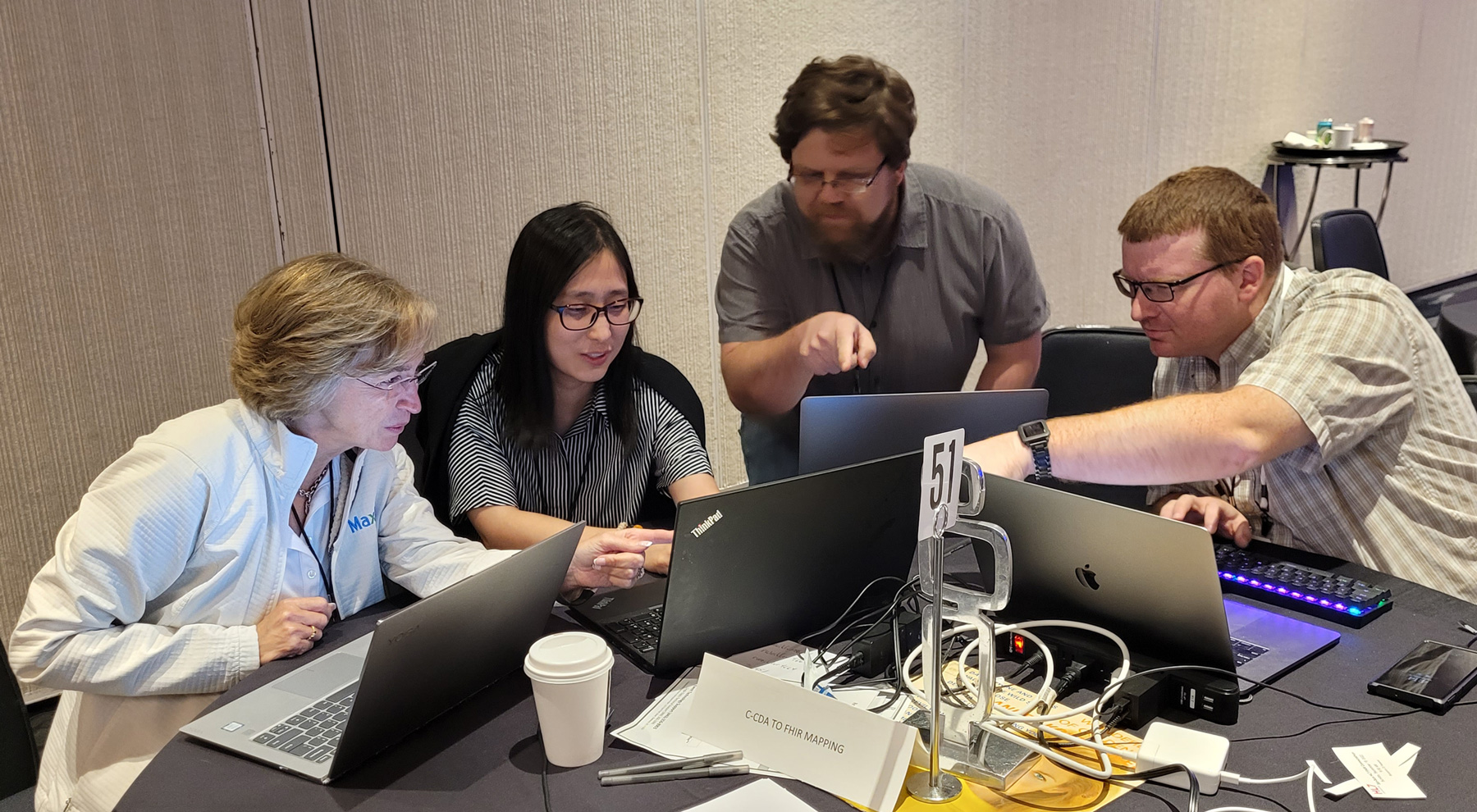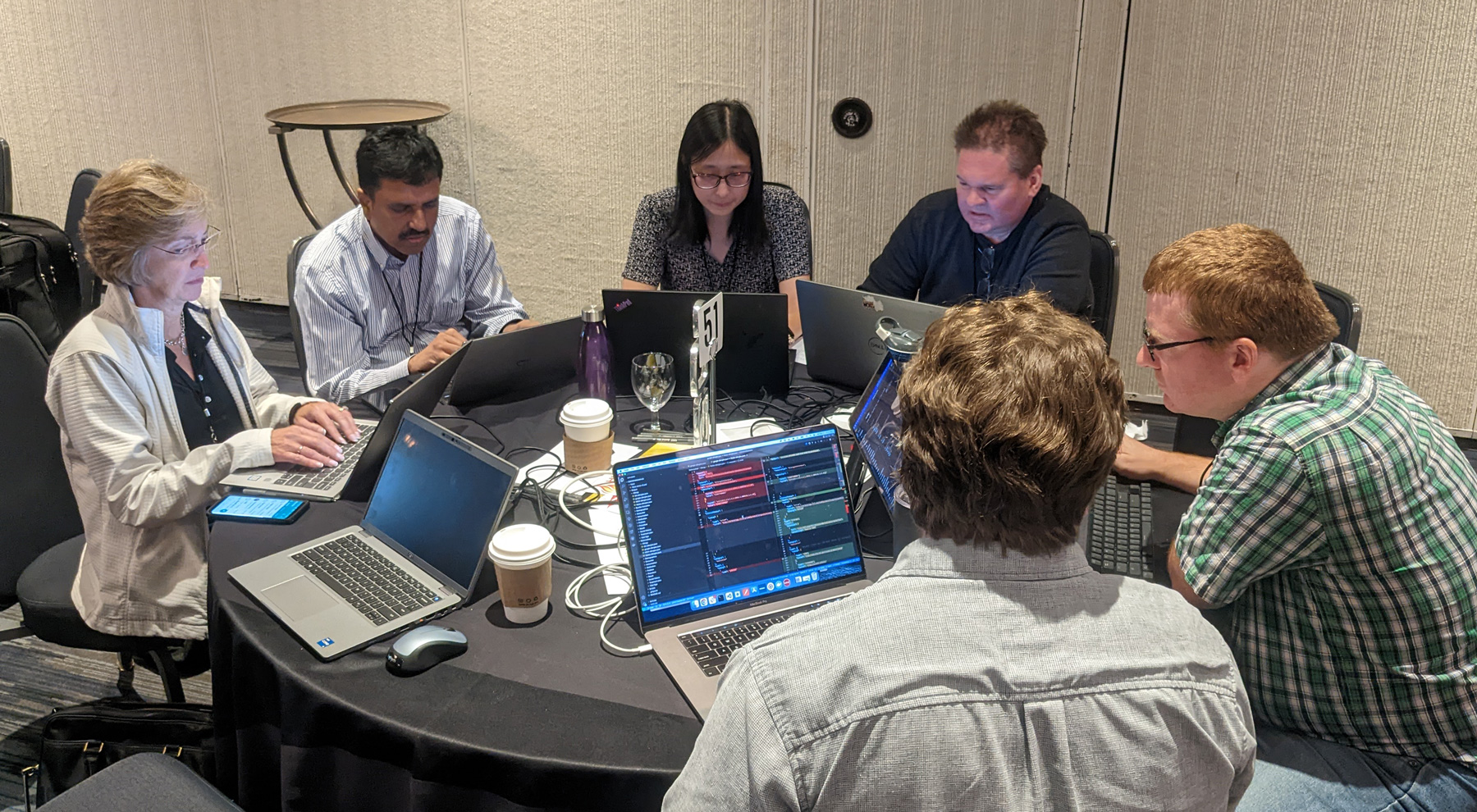Fast Healthcare Interoperability Resources (FHIR) Connectathons gather the best and brightest minds in the healthcare industry to participate in discussions geared towards improving health outcomes by ensuring health IT systems across the nation are interoperable and can effectively share data. After three years of meeting virtually, the HL7 FHIR Connectathon 31 was back in person.
Bringing FHIR implementers together with their peers, as well as with the standards development team, fosters knowledge sharing, hands-on testing, and discussions from different perspectives towards better, clearer guidance for the industry. During the two-day event, the room was electrifying, with more than 300 people attending 34 tracks.
As Vice President of Clinical Informatics at Diameter Health, I served as the track lead for the C-CDA to FHIR mapping track. This was a new track at the FHIR Connectathon, hosted by the C-CDA-to-and-from-US-Core-Mapping Project. Started in 2021, the C-CDA-to-and-from-US-Core-Mapping Project aims to guide the national transition between the two primary electronic health data standards.
While FHIR adoption is mandated in the federal regulations, C-CDA clinical documents remain one of the leading formats for data exchange in the United States, with billions of volumes being generated every year. Therefore, the demand to make the C-CDA data easier to use and integrate with newer FHIR R4 US CORE conformant resources, and vice versa, is increasing. In response, various health IT vendors have started developing their own proprietary mappings. In the absence of an official implementation guide or proper coordination, however, these fragmented efforts could ultimately lead to inconsistency, confusion and even errors when trying to use converted data at the industry level, and would require significant efforts to harmonize later, which is obviously not ideal.
Our C-CDA-to-FHIR-mapping Connectathon track aimed to address this exact issue by bringing together the mapping work done in silos and align as much as possible to form the best practice guidance for the industry. The mapping guideline, along with the example mapping artifacts, will serve as a foundation for a future HL7 ballot. The process also creates feedback to the standards community on gaps or vagueness of current specifications.


During the two-day event, our track attracted representatives from leading health IT companies as well as senior members of the standards community. Google also participated in the online sessions before the Connectathon. We created and shared a common inbound CCD to generate the corresponding FHIR resources using their proprietary mapping engines. We also built a GitHub repository to host the inbound and outbound samples for the broad audience. We then spent most of the time at Connectathon comparing these FHIR resource mappings from different vendors, line-by-line, and discussed the differences.
These comparisons and discussions were very productive and informative. The participants shared that they learned more about FHIR specification evolution, different types, and requirements of C-CDA data elements and the proper ways to map to FHIR, as well as creative ways to keep certain C-CDA links intact when mapping to FHIR composition. The vendors and standards experts also shared different perspectives on several topics such as how to handle C-CDA translations, act vs. observation mapping, context conduction, etc.
In addition, the group achieved consensus on the importance of terminologies in the mapping exercise, including concept maps, and agreed to develop concept maps for several targeted areas such as status, as part of the continued work. All the learnings and findings were recorded in a report-out file. An interesting side benefit of this process is that almost all vendors discovered some bugs in their code during the comparison and subsequent investigations. Since these mapping engines are still under development, this enables them to go back and fix the issues.
The Connectathon was highly productive, but we have more work to do. The track attendees have expressed strong interest in continuing testing and comparing more clinical domains via online meetings, and Diameter Health will continue to participate and lead these efforts. Download the complete Why FHIR is not the Holy Grail of Data Interoperability to learn more about Diameter Health’s approach to automating legacy data at scale to FHIR conversion, while addressing data quality issues to meet government mandates, improve care quality and increase analytics accuracy.


